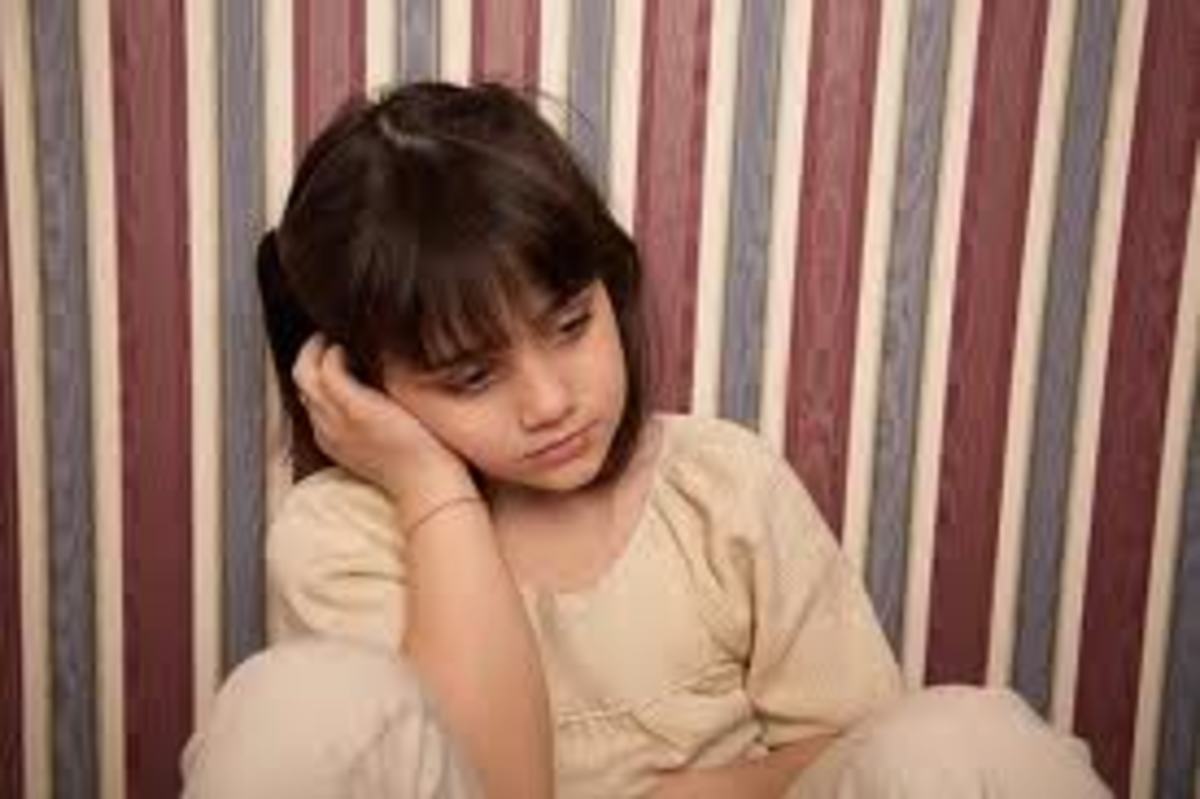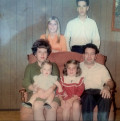The Middle Child in the Family, Part 2/2

Unnoticed and Lost in the Shuffle



LEAST Favorite Child in the Family


LOW Self-Esteem


Middle Children are Often Ignored, Unfavored, and Overlooked by Their Families
The middle child is often in a Catch-22 situation. He/she is often caught in the middle between his older and younger siblings who get all the glory and attention. The middle child is often left out of the familial game. He/she is even not respected for his/her individuality. He/she is always known as the "other sibling."
Many middle children because of their familial environment grow up to have very little sense of individuation and self-esteem. Studies authenticate that it is the middle child who is often the one of the least successful of all birth order types. These same studies further substantiate that middle children often earn $35,000.00 less per annum in their lifetimes than their older and younger siblings.
Middle children are also least likely to be the favorite child in their families. Parents oftentimes favor either their oldest and/or youngest child. A case in point, the late Princess Grace of Monaco, a middle child, reported being unfavored and derided by her parents and siblings alike because she was an extremely introverted child while they are extroverted.
Middle children are often left to fend for themselves and many just fade into the background completely. For example, one of my maternal uncles who was the seventh of ten children, was developmentally slow. My maternal grandparents did not devote the proper time to nurture him intellectually and emotionally as there were other children who needed their attention. As a result, he was left to his own devices and floundered both emotionally and intellectually. He dropped out of high school and had a series of menial and dead end jobs. He lived at home most of his life. He also had a poor self-esteem in addition to becoming withdrawn and shy.
An elementary schoolmate of mine who was the middle of 20 children often had to raise herself. This classmate acknowledged being ignored by her parents and siblings. You could say that she was practically on her own at eleven years of age She had to navigate herself through life without any familial assistance. In school, she often faded into the background and preferred to be anonymous. She also was shy and withdrawn around people.
Another elementary school classmate who was the second of four children was also ignored by her family. However, as a result of being ignored and overlooked by her parents and siblings, she became aggressive and very extroverted. She was very attention seeking and very bossy towards her friends and classmates. She actually became a mean girl in her late elementary and junior high school years.
The middle child is often caught in the familial situation between the oldest and youngest sibling. He/she often has to vy for the attention and respect of parents and siblings. This results in many middle children developing a tough veneer hiding their inner vulnerability and loneliness. It is middle children who report being the most lonely in their families even though the families can be quite large. Many middle children can be classified as shy and withdrawn as a result of being overlooked and overshadowed in the family constellation.
A recent study shows that middle children are more likely to bully their siblings and to be school bullies in general. According to Dr. Alexandra Skew, middle children are competing with their older and younger siblings for the economic, emotional, and psychological attention of their parents. There is intense sibling competition so the middle children acts out by becoming a bully to earn his/her territoriality within the family structure.
Middle children are often the underdogs in their families. They are often invisible. Their families "know" that they exist but that's about all. Many times the oldest child and the youngest child get most of the parental attention because of their more noticeable personalities.
The middle child is often considered an enigma by their parents and siblings. They are often hard to categorize and understand. Many middle children develop a fake persona in order to make them more noticeable and respected by their families. This is why oftentimes the middle child is often "the people pleaser" and "the everyperson" of their families.
Middle children often have the lowest self-esteem and the poorest sense of self of the birth order configurations. Many middle children often prefer to be anonymous since they are not noticed anyway. Middle children frequently develop a chameleon personality, constantly adapting their personality to fit whoever they relate to. The phrase "different things to different people" aptly describes the middle child.
Besides being the most likely to be bullies, many middle children are frequently the object of bullies because they have a poor sense of self and believe that they are nonentities. Middle children, like youngest children, are low in the pecking order of the sibling constellation. They do not have the high status of the oldest child and they are not indulged like the youngest child-they are just there. They are in familial no man's land to say the least.
In summation, the middle child is often overlooked in the family constellation. He/she is often overshadowed by his/her older and younger siblings. The middle child has no clear sense of identity. He/she is considered "the other sibling".
As a result of the ordinal position in the family, many middle children prefer to be anonymous and develop into nonentities. This is a self-fulfilling prophecy since their respective families believe that they are nobodies, they develop quite nondescript personalities in order to cope. Studies show that middle children are the one of the least successful of birth order, on the average earning $35,000.00 less per annum in their lifetimes than either the oldest and/or youngest child.
Oftentimes, many middle children become extremely aggressive, vocal, and attention seeking in order to gain the respect of their parents and their siblings. There is a recent, revealing study that middle children are the most likely to become bullies in order to assert their territoriality within the family structure and in outside society. Middle children are also the least favored children in their families with the older and younger siblings receiving more parental favor.
Middle children often have a nebulous status within their familial environment. They often find it hard to be heard and assert their individuality. Middle children are often the least individualized of all birth orders. This correlates to the recent study as to the one of the reasons middle children are likely to bully both their older and younger siblings.
Because of the low self esteem garnered because of the middle child's familial status, he/she is often bullied by stronger, more self assertive types. Middle children often develop into people pleasers and chameleons in order to make their lives more easier and in order to fit in the family constellation. Being a middle child is difficult at best.
For Further Reading on the Subject
Related Hubs
- Middle Child Syndrome And Me
Middle Child Syndrome really exists. Middle children are often mysterious. They are often pulled between the older and younger siblings. No wonder they struggle with identity issues!
© 2011 Grace Marguerite Williams










